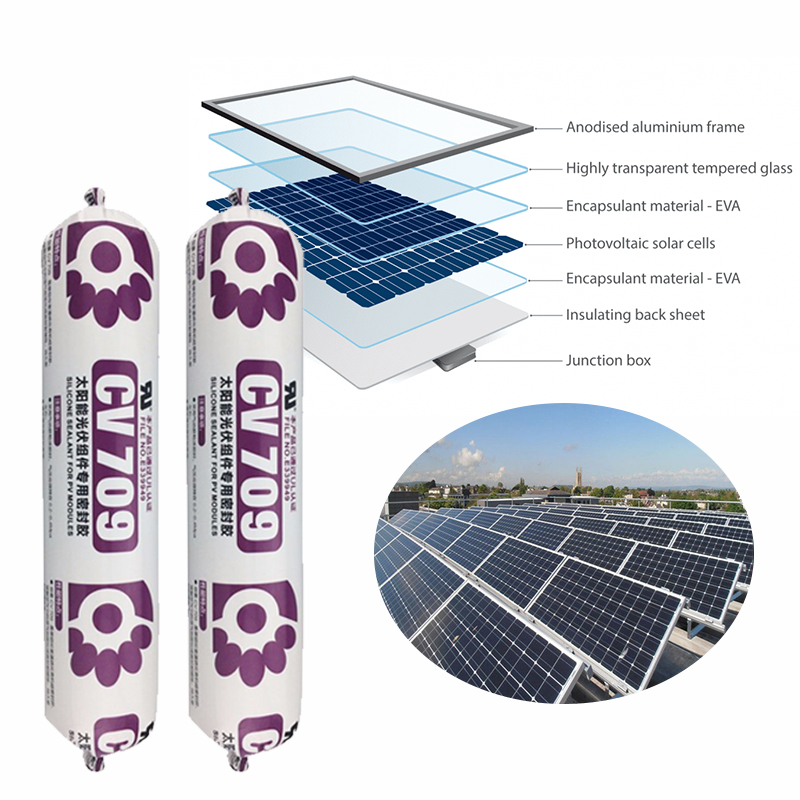Solar energy has emerged as a promising solution to combat climate change and reduce our dependence on fossil fuels. As solar panel technology advances, maximizing its efficiency, durability, and lifetime becomes critical. One of the essential elements to ensure optimum performance is the use of a high-quality solar panel sealant. In this blog post, we'll explore the role of encapsulants in solar panels and delve into the various types used in their manufacture.

A solar panel sealant is an adhesive material designed to form a strong barrier between a photovoltaic (PV) module and its frame or mounting system. These sealants protect solar panels from environmental elements such as moisture, UV radiation, extreme temperatures, and potential damage from expansion and contraction of panel components. They form a watertight and airtight seal that prevents the ingress of moisture or foreign matter that can affect the performance and lifespan of the solar panel.
Solar Panel Sealant Types:
1. Silicone sealant:
Silicone sealants are widely used in solar panel manufacturing due to their excellent resistance to weathering, UV radiation and extreme temperatures. They provide excellent bonding capabilities and ensure an airtight and watertight seal, thus protecting the panels from moisture ingress. Additionally, silicone encapsulants have excellent adhesion to a variety of substrates, making them ideal for solar panels.
2. Polyurethane sealant:
Polyurethane sealants are another common type used in solar panel manufacturing. These sealants have exceptional flexibility, ensuring panels can withstand thermal expansion and contraction without compromising structural integrity. Polyurethane sealants are also highly resistant to environmental elements, including moisture and UV radiation, making them a popular choice for solar panel applications.
3. Butyl rubber sealant:
Butyl rubber sealants are commonly used in the construction of solar panels due to their excellent air and moisture barrier properties. These sealants contain a blend of butyl rubber and adhesive components for excellent weather resistance and bonding capabilities. Butyl rubber sealants are very effective at keeping moisture out and maintaining peak solar panel performance over time.
Quality Assurance:
When evaluating the quality and reliability of a solar panel, understanding the sealants used in its manufacture is critical. A high-quality sealant guarantees the longevity and effectiveness of these panels, allowing for maximum energy production throughout their lifetime. Manufacturers must adhere to strict quality control measures to ensure that the selected sealant meets industry standards and can withstand challenging environmental conditions.
In conclusion, solar panels are paving the way for a greener, more sustainable future. However, the importance of the sealant used in its construction cannot be overlooked. The encapsulant acts as a protective barrier, protecting delicate photovoltaic cells from environmental elements. From silicone sealants to polyurethane and butyl rubber variants, each type plays a vital role in ensuring the integrity and longevity of solar panels. As the demand for renewable energy continues to grow, research and development in encapsulant technology will undoubtedly lead to further advancements that will help increase the overall efficiency and effectiveness of solar panels.

Post time: Jul-31-2023

